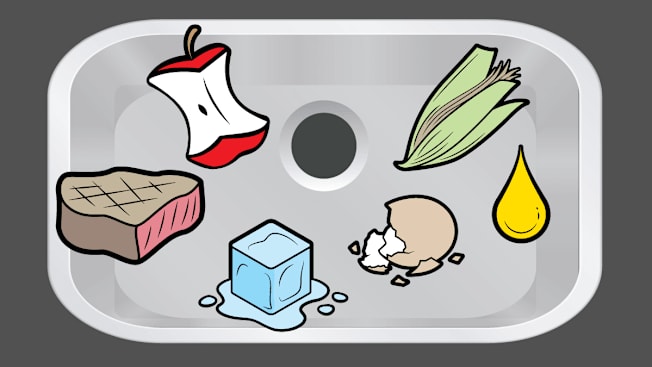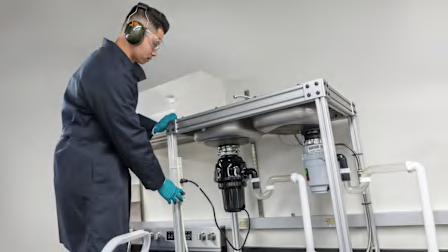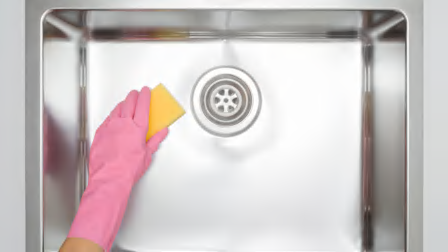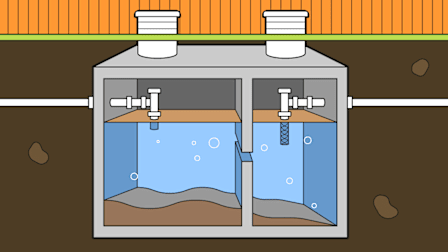Foods You Can and Can’t Put Down the Garbage Disposal
Plumbing and wastewater treatment professionals weigh in on how to protect and prolong your appliance
When you shop through retailer links on our site, we may earn affiliate commissions. 100% of the fees we collect are used to support our nonprofit mission. Learn more.

Contrary to public belief, the food waste grinders in garbage disposals don’t have blades. This means you can deposit fruit pits, small bones, and cooked meat without breaking your disposal, experts told us. So what can’t you put down your drain? The answer may surprise you.
We put garbage disposals to the test in our lab, but we also spoke with disposal manufacturers and experts in plumbing and wastewater treatment to nail down a definitive list of what you can and can’t put down the disposal.
Here’s a quick reference guide. And for all the details, read below.
































Foods You Can’t Put Down the Disposal
For
Fats, oils, and grease: All our experts agreed that those things (what the industry refers to as FOGs) should never go into your disposal—or down any drain, for that matter.
“They might start out in a liquid state, but those materials will congeal and eventually cause clogs further downstream in the sewer system,” says David Duest, director of the Deer Island Treatment Plant in Boston.
Foods You Can Put Down the Disposal
Basically, all other foods—including peach pits, corn cobs, cooked steak, and small bones—can be ground up and washed down the drain.
“People worry that bones will break a food waste disposal’s blades—but food waste disposals don’t actually have blades in them,” Schultz says, explaining that an impeller uses centrifugal action that forces food waste to slide along the surface of a stationary grind ring. This action grinds the food waste materials into smaller particles, in an action similar to a cheese grater. “What you may notice with standard or entry-level disposals is they can be quite loud and vibrate significantly when grinding bones, but they’ll still pulverize them into small particles. To avoid this nuisance, premium disposals equipped with noise-reduction technology can notably reduce this noise and vibration.”
In CR’s garbage disposal lab, we tested each model with heavy-duty beef rib bones to really challenge them, and indeed, they were all able to adequately grind up bones. If you plan to regularly grind bones (nothing larger than a rib bone) and other heavy-duty foods, like fruit pits and corn cobs, opt for a garbage disposal with more horsepower.
“The higher the horsepower, the more difficult foods it can process,” Gattozzi says. Disposals with 1 hp can tackle bones without rattling the sink or making it feel like your ears are bleeding.
Plumbers are a bit more cautious when it comes to recommending putting bones into the disposal because it comes down to what your home’s pipes can handle.
“Even small and medium-sized chunks of bone and other hard foods potentially increase the odds of a clog in your drainage system,” Abrams says. The risk level depends on the age and condition of your pipes. “Large food debris might not present a problem in a newer home with a network of pristine PVC drain pipes, but clog risks go up substantially if you have rugged old cast-iron drain pipes.”
Best Garbage Disposals
Below are five impressive garbage disposals from our tests, listed by their Overall Score. For the ratings of the other 60-plus models we’ve tested, check CR’s full garbage disposal ratings. CR members can also read our garbage disposal buying guide, which includes details on how to choose the right disposal for your kitchen.
@consumerreports Garbage disposals can handle many types of foods—but don’t treat it like a trash can. See ratings and reviews at CR.org/home. #kitchentok #cleantok #cleaningtiktok #garbagedisposal
♬ original sound - Consumer Reports
































